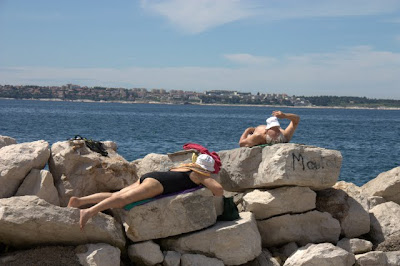Slovenia continued, continued.
Part three: Bovec/Soca River Valley
As magical as Bled was, I was rather drawn to Bovec and the Soca River Valley. To get there, we drove the Vrsic pass through the Julian Alps: a road built mainly by Russian WWI POWs with 50 hairpin turns rising up and then down again through the mountains.
When you land on the other side of the mountains, you are greeted by the Soca River, a river with clear pale turquoise waters.
There are a lot of little towns in the valley, but we especially liked Bovec, a town with less than 2,000 people that is surrounded by mountains on all sides. More on our adventures in Bovec to come.
Part four: Piran
It is hard to ignore the call of the sea, so we headed south to Piran, a quaint town smushed onto a peninsula jutting out into the Adriatic Sea. Very close to Italy, we heard just as much Italian as we did Slovenian. The rain did not let up for most of the time we were there, confining us mostly to our room or a coffee shop, but when it did shine, Piran woke up out of its slumber. We were befuddled by everyone’s proclivity to lay out on rocks or concrete. All seemed very uncomfortable, but I suppose if there is no beach, you make own of your own.
We liked Piran, but it didn’t seem to have a lot of things to do. There were not many shops, and most sold touristy junk. Most of the restaurants served the same types of food, including sea bass upwards of $40. Fish may cost $40 in places like Pittsburgh when it is flown in fresh from far flung places daily, but I couldn’t understand how fish could cost that much in a town next to the sea. I later read that the Adriatic Sea has been overfished, forcing fishers to go further and further away. Piran may be worth a visit if you have lots of time, but we think out of the places we saw, the best parts of Slovenia lie north.








